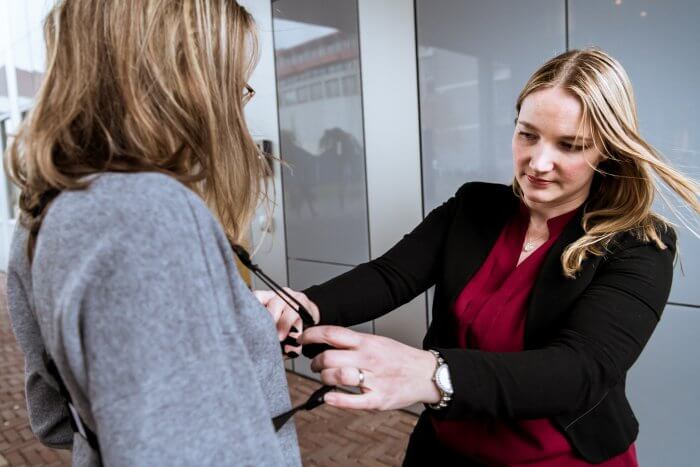Bodycams
In the research project Bodycams, financed by the Police & Science programme, legal psychologist Dr. Annelies Vredeveldt and criminal law scholar Linda Kesteloo, LL.M. investigate the influence of bodycams on the evidence in criminal cases. They are assisted in this project by researchers Alieke Hildebrandt, Renske van der Steen and Dewi Hollander.
The use of bodyworn cameras (bodycams) for police officers is getting more and more popular in The Netherlands and abroad. The primary reasons for introducing bodycams are to prevent unwanted behaviour by both police officers and civilians, and to increase transparency regarding police actions. A potential side effect could be that wearing a bodycam, or subsequently viewing the bodycam footage, could affect the content of police reports about witnessed incidents.

photo by Isabelle Hattink
The aim of this research project is to gain insight into the influence of bodycams, worn by police officers, on the evidence in criminal cases.
Results
The following main findings resulted from the quantitative, qualitative, and legal analysis:
Police reports that were edited after viewing the bodycam footage were more accurate and more complete than the original police reports that were written before watching the bodycam footage. Unexpectedly, no differences in completeness or accuracy were found between the group who wrote their police report before watching the bodycam footage and the group who wrote the report afterwards. One possible explanations may be found in the short timeframe between the incident and writing of the report; reviewing footage might have a bigger impact after some time have passed.
The legal analysis showed that bodycam footage is rarely used as evidence in Dutch criminal cases. Nevertheless, bodycam footage has the potential to play a useful role, for example, in answering the question if the defendant committed the alleged facts, in judging the legality of police officers’ actions, or in checking the content of police reports. An important condition is, however, that any changes made after watching the bodycam footage must be explicitly mentioned, so there is no confusion about the source of the information.
Based on the main findings, three practical recommendations are made to police officers:
- First write the police report, then view the bodycam footage and edit the report
- Record what was changed, added or removed
- If possible, mention the corresponding timestamp on the bodycam footage
These guidelines will facilitate the potential added value of bodycam footage for police investigations and as evidence in criminal cases.
The complete report is available here on the website of Police & Science (only available in Dutch). An 11-min presentation on the study can be viewed here:
